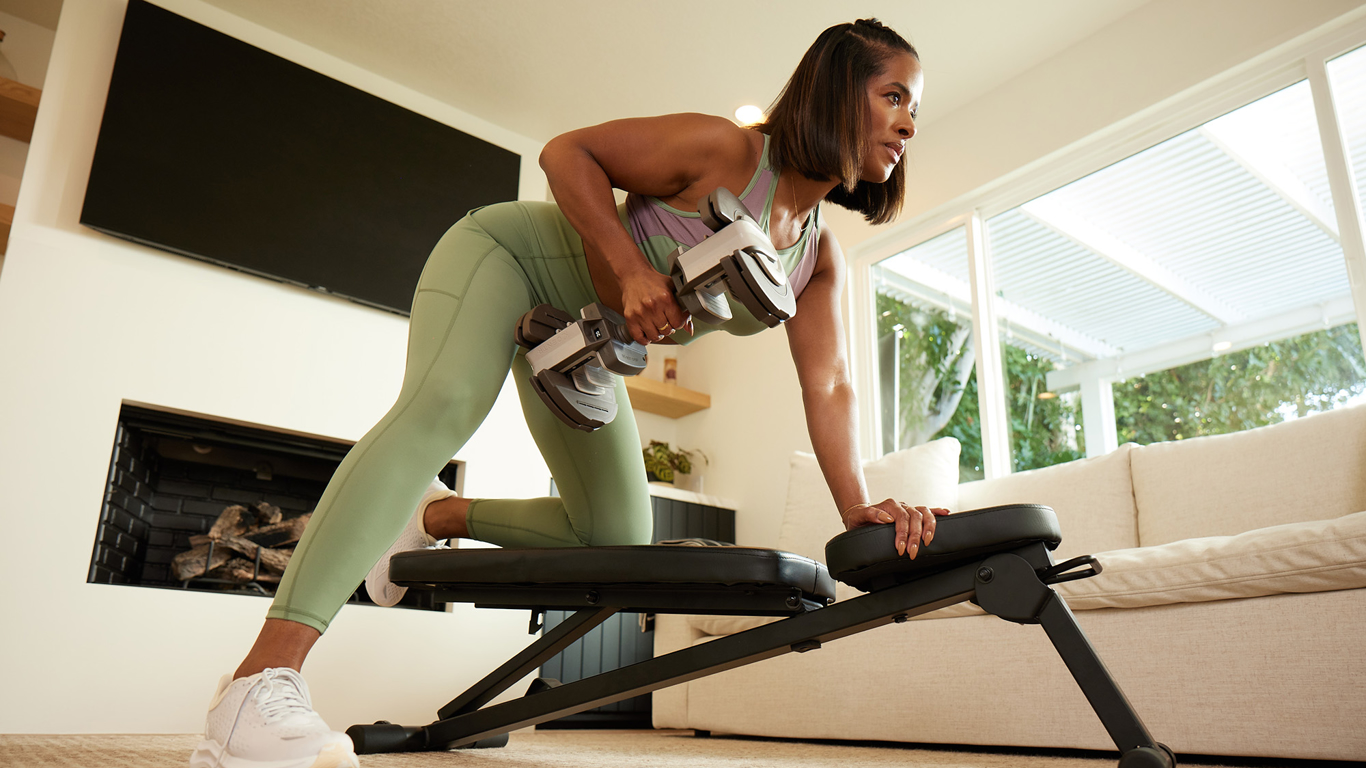Staying motivated to work out can be challenging, but it’s essential for achieving your fitness goals. To maintain a consistent workout routine, set clear and achievable goals that excite you and make the process rewarding. Creating a workout plan that aligns with your interests can transform exercise from a chore into an enjoyable habit.
Moreover, tracking your progress and celebrating small wins along the way can boost your motivation significantly. Remember, it’s normal to face hurdles, but developing strategies to overcome them will keep you on track. Finding new ways to enhance your workout experience can also spark your enthusiasm and keep things fresh.
Key Takeaways
- Set clear and engaging goals to boost motivation.
- Track your progress and celebrate small achievements.
- Find new ways to make workouts enjoyable and varied.
Laying the Foundation for Motivation
To stay motivated in your workouts, it’s essential to understand the psychology behind motivation and set clear, realistic goals. Both of these elements create a solid base for your fitness journey.
Understanding the Psychology of Motivation
Motivation can often change based on your feelings and environment. Recognizing your triggers is key. It’s important to differentiate between intrinsic and extrinsic motivation.
- Intrinsic motivation comes from within. You enjoy the activity or appreciate the health benefits.
- Extrinsic motivation relies on outside factors, like rewards or social recognition.
Using a mix of both can enhance your commitment. You can also create a positive workout environment. Surround yourself with supportive people or play motivating music. This can strengthen your determination and discipline.
Setting Clear and Realistic Goals
Setting clear and realistic goals is crucial in maintaining motivation. Begin by defining specific, measurable, and achievable goals. For instance, instead of saying, “I want to get fit,” set a goal like, “I will exercise for 30 minutes, three times a week.”
Breaking larger goals into smaller ones can help maintain focus. Celebrate these small successes to boost your motivation. You might start with walking for 10 minutes and gradually increase.
Regularly review your goals to ensure they reflect your changing circumstances or abilities. Adjust them if needed to keep them realistic. This approach helps you stay engaged and committed to your workout routine.
Designing Your Workout Plan
Creating a well-structured workout plan is crucial for maintaining motivation and achieving fitness goals. This plan involves selecting effective exercises, balancing different types of workouts, and ensuring adequate rest for recovery.
Choosing the Right Exercises
Select exercises that align with your fitness goals. If you aim for strength, incorporate strength training activities using weights or resistance bands. For overall fitness, a mix of cardio and strength training works well.
Consider including:
- Aerobic exercises (e.g., running, biking)
- Strength training (e.g., weightlifting, bodyweight exercises)
- Flexibility work (e.g., yoga)
Varying your exercises keeps your routine interesting. Aim for moderate-intensity exercises on certain days and high-intensity workouts to boost your heart rate and challenge your body.
Balancing Workout Types
It’s important to balance different types of workouts in your plan. This approach helps to avoid burnout and reduces the risk of injuries.
Try to include:
- Strength training at least twice a week
- Cardio exercises for 150 minutes of moderate-intensity or 75 minutes of high-intensity per week
- Flexibility and balance training through sessions of yoga or stretching
You can alternate workout days, focusing on strength one day and cardio the next. This balance helps you stay motivated and ensures all muscle groups get attention.
Incorporating Rest and Recovery
Rest days are essential for your body to recover and rebuild. Without them, you risk fatigue and injuries. Plan at least one or two rest days each week.
During rest days, consider lighter activities like stretching or yoga. This will keep you active while allowing muscles to recover.
Listen to your body. If you feel excessively sore or tired, adjust your plan. Remember, a good workout routine is about consistency and sustainability, not pushing too hard. Prioritizing rest ensures better performance on workout days.


Maintaining Consistency
Staying motivated to work out requires forming lasting habits and being flexible with your routine. You can build an exercise habit that fits smoothly into your life, even as it changes.
Building an Exercise Habit
To create a strong exercise habit, start by setting clear and achievable goals. Choose specific workout times and stick to them. For instance, if you plan to exercise on Monday, Wednesday, and Friday at 6 PM, mark it on your calendar.
Tips to build your habit:
- Create a Schedule: Consistency is key. Write down your workouts for the week.
- Use Triggers: Link your workout to a daily activity, like brushing your teeth.
- Track Your Progress: Use a journal or app to log workouts. Seeing improvement can boost your motivation.
Make sure to vary your workouts to keep things interesting. Alternate between cardio, strength training, and flexibility exercises. This variety helps keep your routine fresh and enjoyable.
Adapting to Lifestyle Changes
Life can be unpredictable. Job changes, family commitments, or other activities might disrupt your routine. Stay flexible with your workout plan to maintain consistency.
When facing these changes, assess your schedule. If your workout time needs to shift, find a new time that works, like early morning or during lunch breaks.
Strategies for adaptation:
- Shorter Sessions: If you’re pressed for time, opt for shorter, high-intensity workouts.
- Home Workouts: Use at-home exercises when you can’t make it to the gym. Bodyweight exercises are effective.
- Accountability: Share your fitness goals with friends or join a group. This support system can help you stay motivated despite challenges.
By embracing these strategies, you can keep up your workout consistency, regardless of life’s demands.
Monitoring and Celebrating Progress
Keeping track of your fitness progress and rewarding yourself for achievements can significantly boost your motivation. By monitoring your journey, you can see improvements in your energy levels and overall fitness. Celebrating milestones along the way strengthens your commitment.
Tracking Your Fitness Journey
Tracking your fitness progress helps you understand your improvements over time. You can use fitness apps or trackers to monitor activities, heart rate, and even caloric burn.
Consider maintaining a fitness journal where you note down your workouts, nutrition, and how you feel. This practice allows you to see patterns, adjust your routine, and set realistic goals based on your fitness level.
Here’s a simple way to track your journey:
- Weekly Workouts: List exercises, duration, and difficulty.
- Measurements: Record weight, body fat percentage, and measurements every month.
- Energy Levels: Note how you feel after workouts to assess improvements.
Implementing a Reward System
Creating a reward system is crucial for maintaining motivation. Set small, achievable goals and determine rewards for when you reach them. This could be anything from a new workout outfit to a healthy treat you enjoy.
Here’s how to implement your reward system:
- Set Clear Goals: Make your goals specific and achievable.
- Choose Rewards: Decide what you will reward yourself with. Aim for positive incentives that align with your fitness journey.
- Enjoy Milestones: Celebrate not just large achievements, but also small victories, like completing a week of consistent workouts.
By establishing a reward system, you create positive reinforcement, making it easier to stay committed.
Overcoming Common Barriers
Staying consistent with workouts can be tough due to various barriers. You might face physical and mental roadblocks or feel the need for motivation and support. Here are ways to address these common challenges.
Dealing with Physical and Mental Roadblocks
Physical discomfort, fatigue, and injury often stop you from working out. Pay attention to your body’s signals. If you feel pain, take a break or modify your routine. This allows time for recovery and helps prevent further injury.
Mental roadblocks, such as stress and boredom, also play a big role. Stress can lower your motivation. Incorporating activities you enjoy can keep workouts exciting. Set small, achievable goals to build confidence. Use positive self-talk to combat negative thoughts. Remind yourself of the mental health benefits of exercise, like the boost of endorphins.
Finding Support and Motivation
Having a support system can greatly impact your motivation. Share your fitness goals with friends or family. They can encourage you and help keep you accountable. Consider joining a fitness class or group. Being part of a community can enhance your experience and introduce you to new workouts.
Rewards can also motivate you to stay on track. After reaching a goal, treat yourself to something enjoyable, like a favorite snack or a movie night. Celebrate your achievements, no matter how small, to maintain your motivation. Finding what works best for you will make your fitness journey more enjoyable and fulfilling.
Enhancing Your Workout Experience
Boosting your workout experience involves preparing effectively and making the most of technology and gear. Focusing on these elements can lead to better physical health and greater motivation.
Optimizing Pre- and Post-Workout Routines
Creating an effective pre-workout routine is important for setting yourself up for success. Start by fueling your body with proper nutrition. Aim for a light meal or snack that includes carbohydrates and protein about 30 to 60 minutes before exercising. This can help improve your endurance and performance.
Warm up with dynamic stretches or light cardio before your workout. This prepares your muscles and heart for the activity ahead. Visualization techniques can also help. Picture your success and the goals you want to achieve, boosting your mindset.
Post-workout routines are just as crucial. Cool down with gentle stretches to improve flexibility and prevent injury. Hydrate and refuel your body after your session with a balanced meal or snack. This supports recovery and helps maintain your energy levels for future workouts.
Utilizing Technology and Gear
Using technology can enhance your workout experience significantly. Consider investing in wearable fitness trackers. These devices monitor your heart health, steps, and calories burned. They can provide valuable data to help you stay accountable.
Apps can also play a vital role. Many offer guided workouts, nutrition advice, or the ability to create a personalized playlist. Music can elevate your mood and make your sessions more enjoyable.
Dressing for success is equally important. Invest in quality workout gear that makes you feel comfortable and confident. Wearing the right clothing can improve your performance and keep you motivated. Look for breathable fabrics and supportive footwear that suits your workouts.





